We included HMH Into Math Grade 7 Answer Key PDF Module 9 Draw and Analyze Two-Dimensional Figures to make students experts in learning maths.
HMH Into Math Grade 7 Module 9 Answer Key Draw and Analyze Two-Dimensional Figures
Geometry

Data Analyst
A data analyst helps companies make good business decisions by collecting, analyzing, and storing data. The data may be related to sales, market research, costs, errors, or just about anything. A data analyst looks for patterns and trends in the data and then presents the results in a meaningful way.
STEM Task
A rectangular electronic game board is 16.5 inches by 12 inches. It includes a grid with 8 rows of 8 squares, each 0.5 inch on a side. When you aim a laser at any of the red squares, data are collected on the accuracy of the hits. What are the ratios of (a) the area of one square to the area of the board, and (b) the combined area of the squares to the area of the board? Explain.
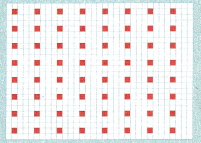
Learning Mindset Perseverance Learns Effectively

Perseverance is the ability to stick with a task until it is complete. But it can be difficult to persevere when a task seems too big or complicated. If you feel overwhelmed by a task, try dividing it into smaller, easier steps. Here’s how:
- Identify the end goal of the task. Then work backward. What do you need to do before you can reach the end goal? What do you need to do before that? And before that?
- Alternatively, start by identifying just the first step. Sometimes completing the first step will help you see the second step.
- Each step should be specific and small enough to feel achievable. If a step feels overwhelming, break it down into even smaller steps.
Reflect
Question 1.
What steps were involved in completing the STEM Task?
Answer:
Finding the area of the complete board.
Finding the area of the square in the grid.
Explanation:
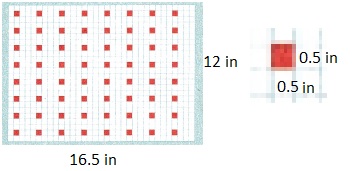
first step to finding the area of the complete board
Board Area = length x width
A = 16.5 x 12 = 198 sq in
second step is to finding the area of the square in the grid
Area of a square = side x side = 0.5 x 0.5 = 0.25 sq in
Question 2.
Can you compute a ratio from the STEM Task more efficiently by refining how you used an area formula? Explain.
Answer:
Yes, we can compute a ratio from the STEM Task more efficiently by refining.
Explanation:
(a) the ratios of the area of one square to the area of the board
= 198/0.25
= 792 sq in
= 792 : 1
(b) the ratios of the combined area of the squares to the area of the board
combined are of the squares is
one square are x total number of squares on the board
= 0.5 x 64 = 32 sq in
the ratios of the combined area of the squares to the area of the board
= 198/32
= 6.1875 in
9.1875 : 1
MOUSETRAP ON THE COORDINATE PLANE!
There is a mouse on the coordinate plane shown here. The mouse is at a location that has integer coordinates.

To find the mouse, first graph the following polygons.
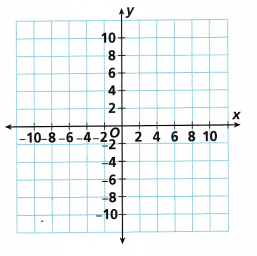
A. Triangle ABC with vertices fY
A(-7, 7), B(3, 7), and C(-2, 2)
Answer:
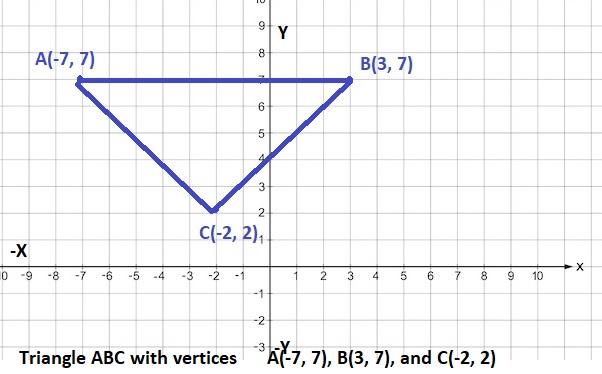
Explanation:
Integer coordinates are pairs of integers that are used to determine points in a grid,
relative to a special point called the origin.
The origin at the center of the grid has co-ordinates (0,0).
So, Triangle ABC with vertices fY are A(-7, 7), B(3, 7), and C(-2, 2)
B. Parallelogram EFGH with vertices E(-3, 5), F(6, 5), and G(3, 1). Where is vertex H located?
Answer:
H(-6, 1)
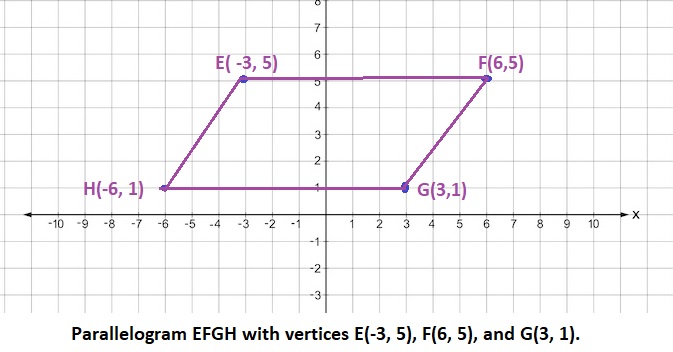
Explanation:
Integer coordinates are pairs of integers that are used to determine points in a grid,
relative to a special point called the origin.
The origin at the center of the grid has co-ordinates (0,0).
Join the vertex EFG to find the other vertex.
Parallelogram EFGH with vertices E(-3, 5), F(6, 5), and G(3, 1) Where as H(-6, 1)
C. Square KLMN with vertices K(-1, 4), L(6, 4), and M(6, -3). Where is vertex N located?
Answer:
N(-1, -3)
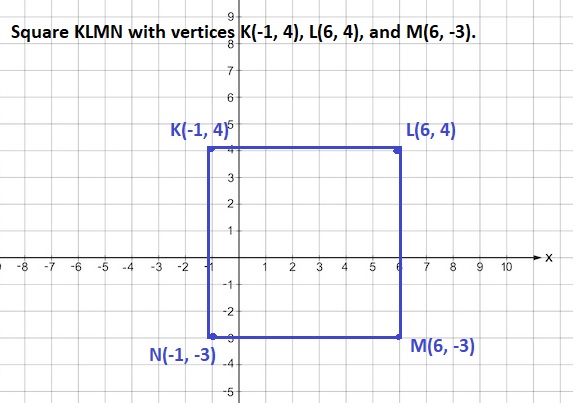
Explanation:
Integer coordinates are pairs of integers that are used to determine points in a grid,
relative to a special point called the origin.
The origin at the center of the grid has co-ordinates (0,0).
Join the vertex KLM to find the other vertex.
Square KLMN with vertices K(-1, 4), L(6, 4), and M(6, -3)Where as vertex N (-1, -3)
D. Trapezoid PQRS with vertices
P(-3, 4), Q(2, -1), R(2, -6), and S(-3, -9)
Answer:
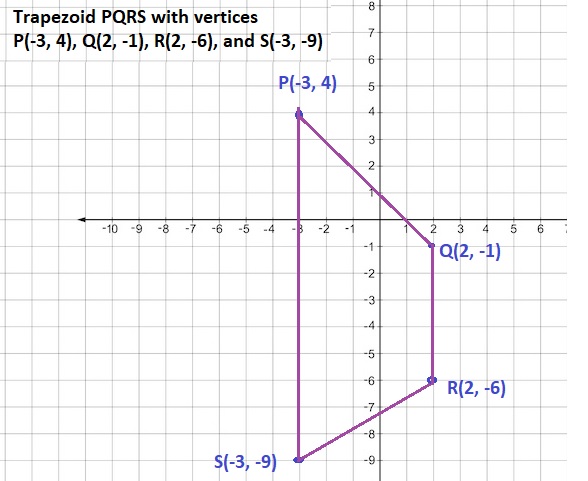
Explanation:
Integer coordinates are pairs of integers that are used to determine points in a grid,
relative to a special point called the origin.
The origin at the center of the grid has co-ordinates (0,0).
Join the vertex PQRS of a trapezoid P(-3, 4), Q(2, -1), R(2, -6), and S(-3, -9).
E. Now use these clues.
The mouse is located inside Triangle ABC.
The mouse is located inside Parallelogram EFGH.
The mouse is located outside Square KLMN.
The mouse is located outside Trapezoid PQRS.
Answer:
The mouse is located in the parallelogram second co-ordinate as shown below
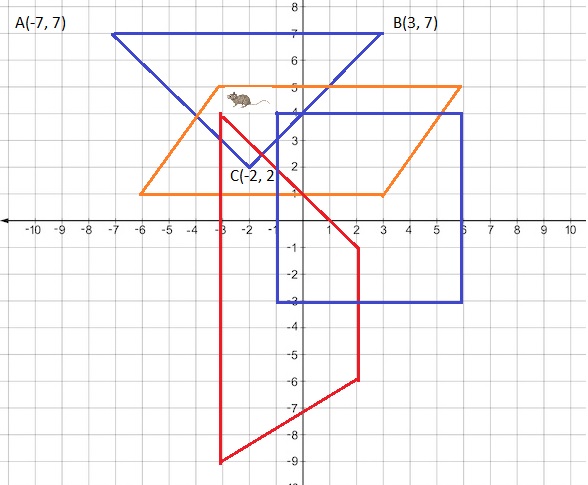
Explanation:
When all the polygons are placed on graph, as shown above the mouse is located in parallelogram.
Turn and Talk
What are the coordinates of the location of the mouse? Explain how you know.
Answer:
Mouse is in second co-ordinate.
Explanation:
According to the given information and the figure shown above the mouse is trapped in the second co ordinate.
Are You Ready?
Complete these problems to review prior concepts and skills you will need for this module.
Quadrilaterals
Classify each quadrilateral in as many ways as possible. Write parallelogram, rectangle, square, or trapezoid. If the figure is a quadrilateral only, write quadrilateral.
Question 1.
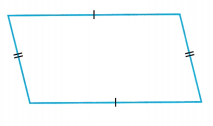
Answer:
parallelogram
Explanation:
A parallelogram is a two-dimensional geometrical shape,
whose sides are parallel to each other.
Question 2.

Answer:
Quadrilateral
Explanation:
A quadrilateral is a polygon having four sides, four angles, and four vertices.
Polygons in the Coordinate Plane
Determine the length of each side of Quadrilateral ABCD.

Question 3.
Side AB ______________
Answer:
5 units
Explanation:
Each box or square in the grid or graph represents 1 unit.
So, side of AB is 5 units.
Question 4.
Side CD ______________
Answer:
4 units
Explanation:
Each box or square in the grid or graph represents 1 unit.
So, side of CD is 4 units.
Question 5.
Side AD ______________
Answer:
2 units
Explanation:
Each box or square in the grid or graph represents 1 unit.
So, side of AD is 2 units.
Question 6.
Draw Triangle FGH with vertices F(-4, -4), G(-5, 2), and H(-1, -4) in the coordinate plane.
Answer:
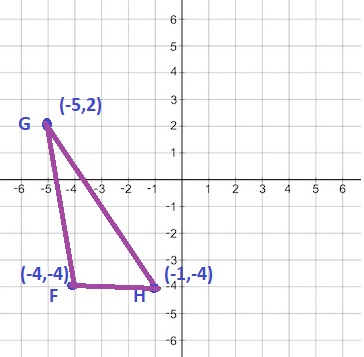
Explanation:
A coordinate plane is a two-dimensional plane formed by the intersection of a vertical line called y-axis and a horizontal line called x-axis.
So, join all the vertices in the cco-ordinate plane as shown above to form a triangle.
Angle Relationships
The figure includes Lines l and m. Use the information in the figure to determine the measure of each angle.
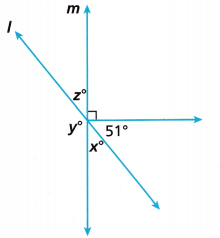
Question 7.
x ______________
Answer:
39°
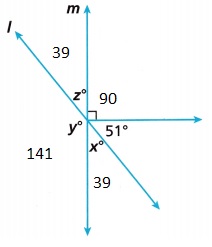
Explanation:
Ray m = with 180 degrees
x = 180 – (90 + 51)
x = 180 – 141
x = 39°
Question 8.
y ______________
Answer:
141°

Explanation:
y = 180 – x
y = 180 – 39°
y = 141°
Question 9.
z ______________
Answer:
39°

Explanation:
z° = x°
both the angle are of same size
x = 180 – 141
x = 39°
z = 39°
Question 10.
What is the relationship between the angles whose measures are x° and y°? Explain how you know.
Answer:
x° + y° = 180°
Explanation:
The relationship between the angles whose measures are x° and y° is 180 degrees.
The sum of the angle of a straight line is 180 degrees.
So, x° + y° = 180°